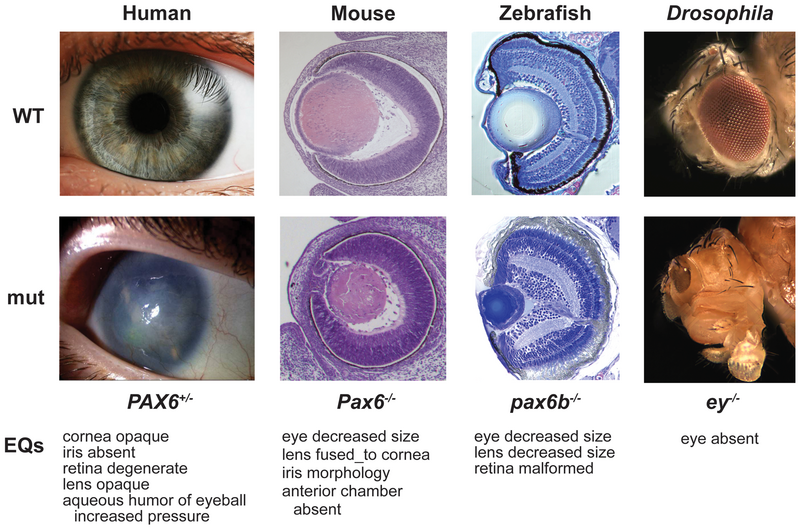File:PAX6 Phenotypes Washington etal PLoSBiol e1000247.png
Jump to navigation
Jump to search

Size of this preview: 800 × 530 pixels. Other resolutions: 320 × 212 pixels | 640 × 424 pixels | 1,024 × 678 pixels | 1,280 × 848 pixels | 2,983 × 1,976 pixels.
Original file (2,983 × 1,976 pixels, file size: 4.72 MB, MIME type: image/png)
File history
Click on a date/time to view the file as it appeared at that time.
| Date/Time | Thumbnail | Dimensions | User | Comment | |
|---|---|---|---|---|---|
| current | 21:22, 28 November 2009 |  | 2,983 × 1,976 (4.72 MB) | TenOfAllTrades | {{Information |Description={{en|1=Phenotypes of wild-type (top) and PAX6 ortholog mutations (bottom) in human, mouse, zebrafish, and fly can be described with the EQ method. EQ annotations of the abnormal phenotypes are listed below each set of images per |
File usage
The following 2 pages use this file:
Global file usage
The following other wikis use this file:
- Usage on ar.wikipedia.org
- Usage on bs.wikipedia.org
- Usage on ca.wikipedia.org
- Usage on de.wikipedia.org
- Usage on en.wikipedia.org
- Genotype–phenotype distinction
- Evolutionary developmental biology
- Homology (biology)
- PAX6
- Portal:Evolutionary biology
- Deep homology
- User:Daniel Mietchen/Talks/Wikimania 2012/National Center for Biotechnology Information/Wikimedia/Open Access File of the Day
- Wikipedia:WikiProject Open/Open access task force/Wikimedia at OAI8/Barriers to reuse of Open Access materials
- Usage on es.wikipedia.org
- Usage on gl.wikipedia.org
- Usage on ja.wikipedia.org
- Usage on ru.wikipedia.org
- Usage on zh.wikipedia.org
